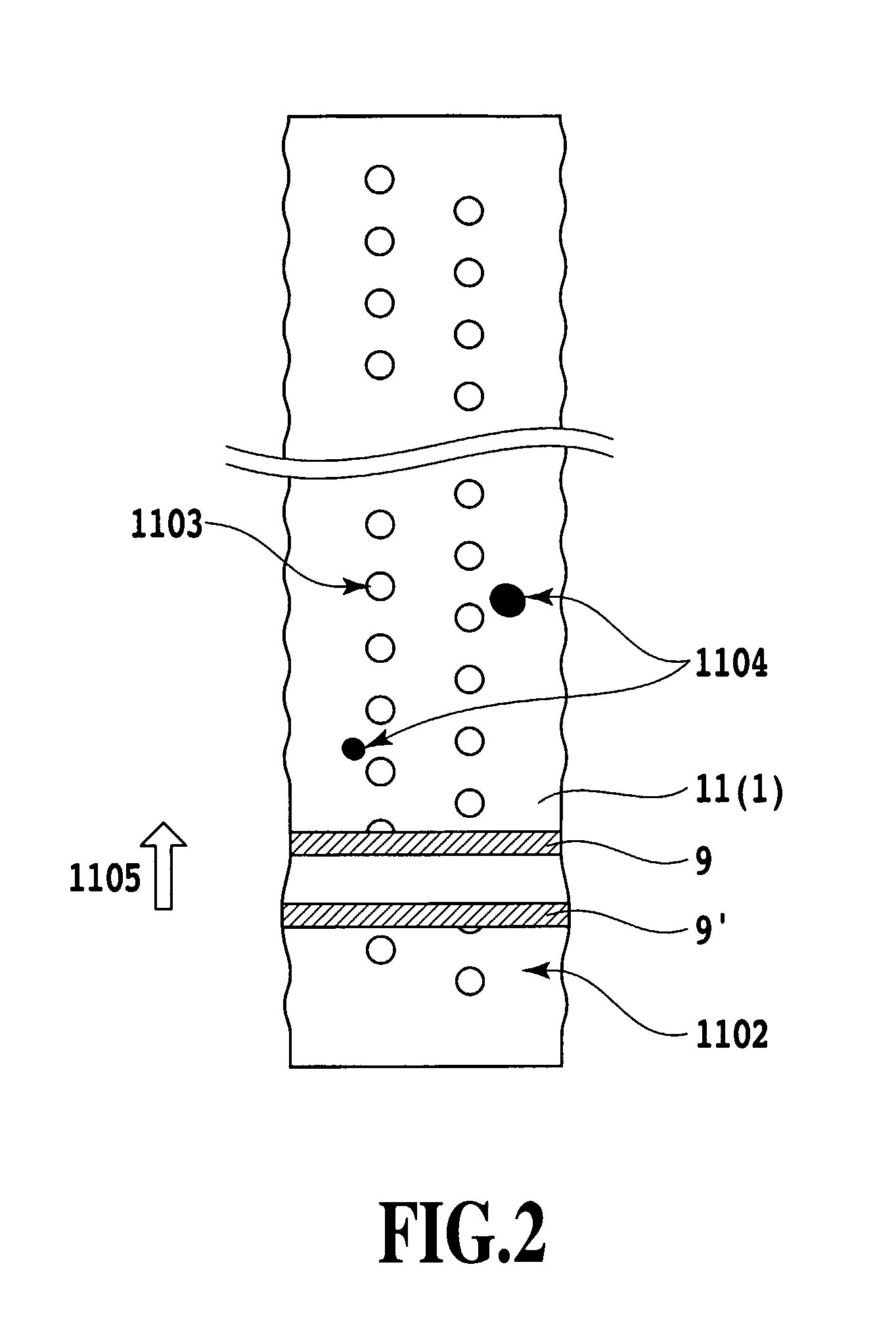Ink jet printing apparatus and ink processing method for same
a technology of ink processing and printing apparatus, which is applied in the field of printers, can solve the problems of inflating bubbles, ejection failure, and getting trapped in bubbles, and achieves the effect of no cumbersome operations and increased running costs
- Summary
- Abstract
- Description
- Claims
- Application Information
AI Technical Summary
Benefits of technology
Problems solved by technology
Method used
Image
Examples
first embodiment
[0043]FIG. 1 is a schematic perspective view showing an essential portion of an ink jet printer according to one embodiment of this invention.
[0044]In the ink jet printing apparatus shown, a carriage 100 is secured to an endless belt 5 and can be moved along a guide shaft 3. The endless belt 5 is wound around a pair of pulleys 503, one of which is coupled to a drive shaft of a carriage drive motor (not shown). Thus, the carriage 100 is reciprocally moved to the left and right along the guide shaft 3 (main scan) in this figure, as the motor is operated.
[0045]On the carriage 100 is mounted a print head 1 that removably holds an ink tank 2. The print head 1 has an array of ink ejection nozzles facing a print medium or paper P and arranged in a direction other than a main scan direction (for example, in a sub-scan direction in which the print medium 6 is fed). A set of the nozzle array and the ink tank 2 can be provided in number corresponding to that of ink colors used. In the example ...
second embodiment
[0060]The maintenance mechanism to which this invention can be applied is not limited to the wiper blade that directly contacts the ejection face 11 of the print head 1 as described in the above embodiment. This invention is also applicable to the portion that holds waste ink discharged as a result of preliminary ejection and suction-based recovery operation.
[0061]FIG. 7 is a schematic perspective view showing an essential portion of an ink jet printer according to the second embodiment of the invention. This example has an almost similar construction to that of FIG. 1 and components similar in structure to those of the first embodiment (FIG. 1) are assigned like reference numbers. In the following embodiments, although only one wiper blade (reference number 9) is shown, two of them may of course be provided as in the first embodiment.
[0062]FIGS. 8A and 8B are schematic side views of an essential portion of this embodiment, as seen from the arrow of FIG. 7.
[0063]Two tubes 21 are con...
third embodiment
[0074]The present invention can be applied not only to the maintenance mechanism for keeping the ink ejection performance of the print head 1 in good condition as explained in the first and second embodiments, but also to other means to process ink that has come out of the print head 1.
[0075]FIG. 10 is a schematic perspective view of an essential portion of an ink jet printer according to still another embodiment of this invention. This example has almost the same construction as that of FIG. 1 and components that are similar in construction to those of the first embodiment (FIG. 1) are assigned like reference numbers. Further, FIG. 11 is a schematic side cross-sectional view, as seen from the direction of arrow in FIG. 10.
[0076]In these figures, reference numbers 38 and 39 represent a pair of transport rollers provided on an upstream side in a transport path of a print medium 6. Denoted 36 is a platen to support the print medium 6 in an area facing the ejection face 11 of the print...
PUM
 Login to View More
Login to View More Abstract
Description
Claims
Application Information
 Login to View More
Login to View More - R&D
- Intellectual Property
- Life Sciences
- Materials
- Tech Scout
- Unparalleled Data Quality
- Higher Quality Content
- 60% Fewer Hallucinations
Browse by: Latest US Patents, China's latest patents, Technical Efficacy Thesaurus, Application Domain, Technology Topic, Popular Technical Reports.
© 2025 PatSnap. All rights reserved.Legal|Privacy policy|Modern Slavery Act Transparency Statement|Sitemap|About US| Contact US: help@patsnap.com



